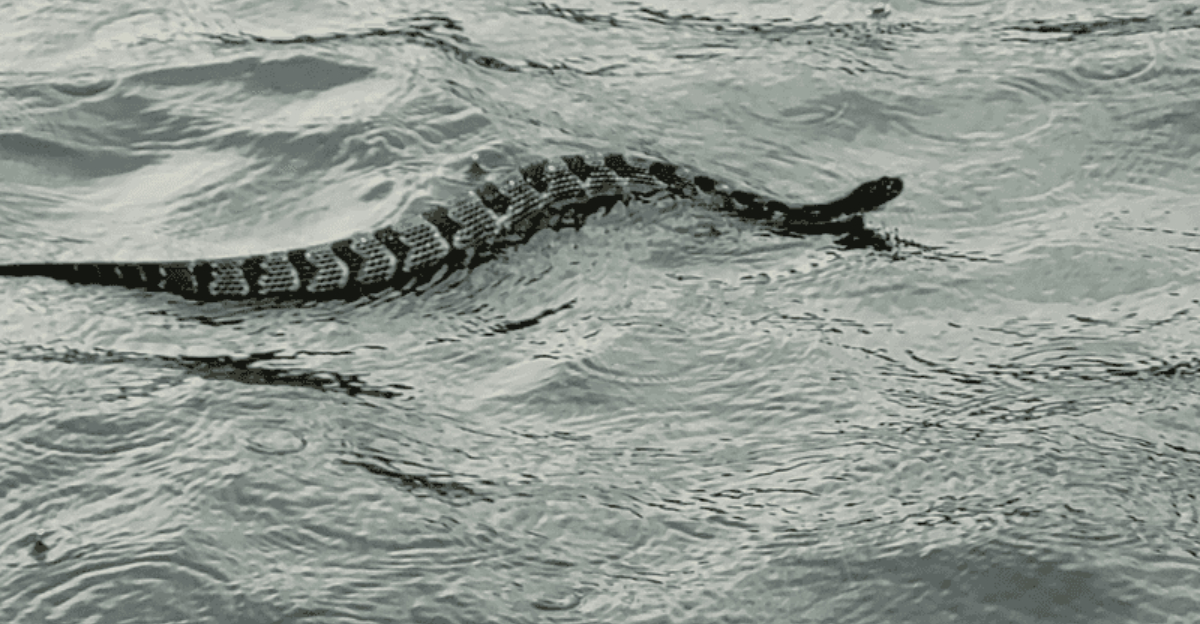The Mississippi River, a vital artery of North America, not only supports diverse wildlife but is also home to a captivating array of snake species.
These slithering inhabitants play a crucial role in maintaining the ecological balance of the riverine system. With their unique behaviors and adaptations, they thrive in the wetlands, forests, and waters surrounding this iconic river.
From the familiar to the exotic, these snakes showcase nature’s marvels and mysteries. So, let’s explore these snakes that not only survive but thrive along the Mississippi River.
1. Common Water Snake
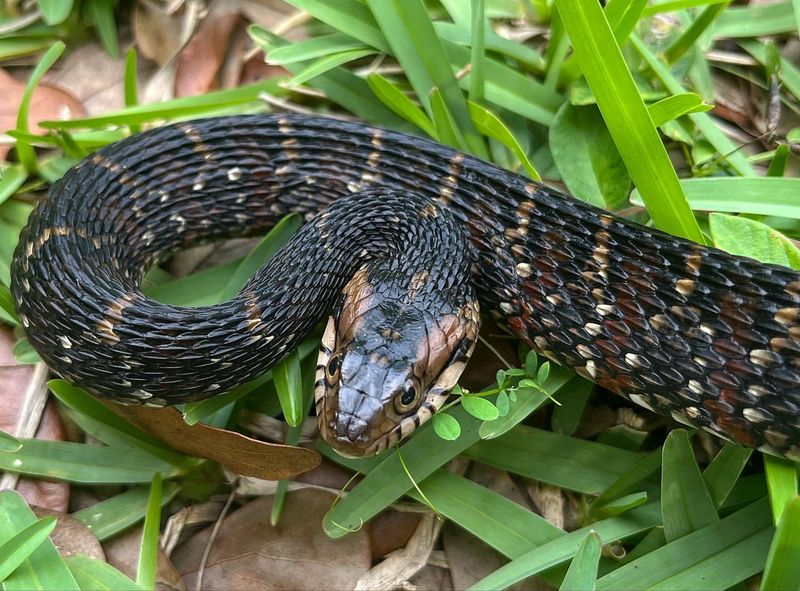
The Common Water Snake, often found slithering along the banks of the Mississippi River, is a non-venomous reptile prized for its role in controlling aquatic pests.
These snakes are frequently mistaken for the venomous cottonmouth due to their similar appearance, but they are harmless to humans. Their bodies are stout, adorned with dark crossbands that provide excellent camouflage among river debris.
During warm days, they bask on rocks and logs, soaking in the sun’s rays. This behavior is crucial for their thermoregulation, aiding in digestion and activity. They are agile swimmers, often seen darting after fish and amphibians in the river’s currents.
Despite their reclusive nature, they can be quite aggressive when threatened, often flattening their bodies and striking repeatedly. This behavior is a bluff, part of their defense mechanism to deter predators.
Their diet primarily consists of fish and frogs, contributing to the ecosystem by controlling these populations. Through their interactions, the Common Water Snake plays a vital role in the river’s food web, showcasing the intricate balance of nature.
2. Western Cottonmouth
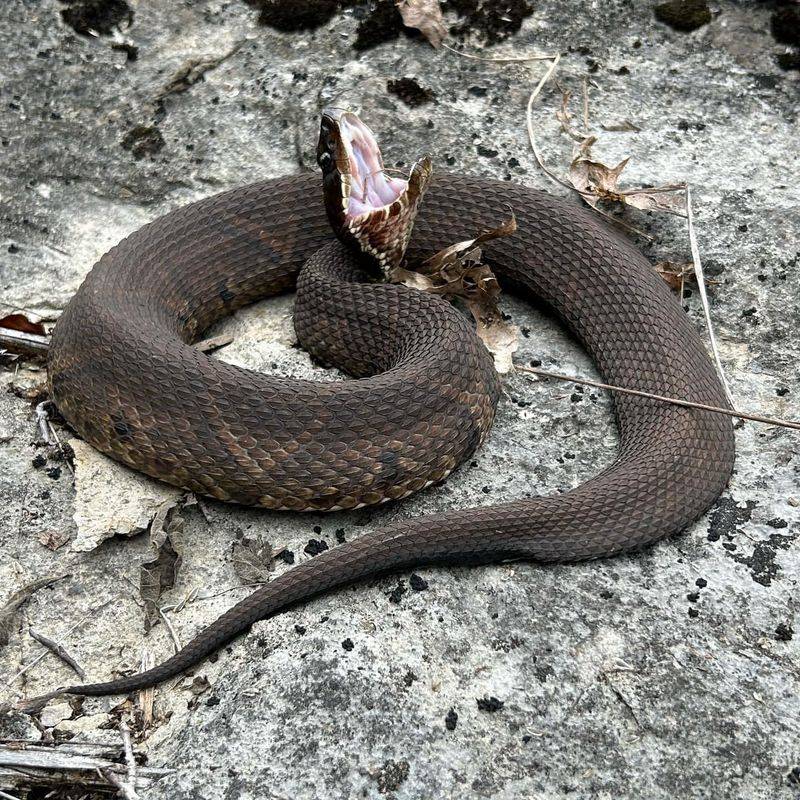
The Western Cottonmouth, also known as the Water Moccasin, is one of the most recognizable venomous snakes inhabiting the Mississippi River’s wetlands.
Known for their distinctive white mouth lining, these snakes are often feared but play a vital role in the ecosystem. They are robust and capable swimmers, often seen gliding stealthily through the water.
Their body is typically a dark olive or brown, with crossbands that may fade as they age. Often basking on rocks or near the water’s edge, they regulate their body temperature through external heat sources.
When threatened, the Western Cottonmouth may coil and display its fangs in a dramatic defensive posture, a warning to potential predators.
Their diet includes fish, amphibians, and even small mammals, making them effective at controlling these populations. Despite their fearsome reputation, they are generally shy and avoid human interaction when possible.
Understanding their behavior and ecological importance can help mitigate unwarranted fear and support conservation efforts.
3. Eastern Garter Snake
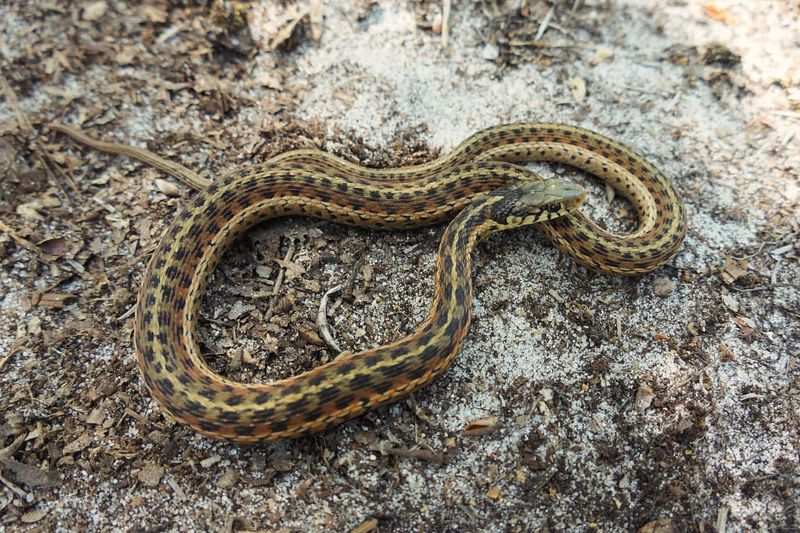
The Eastern Garter Snake is a common sight along the Mississippi River, renowned for its adaptability and striking striped appearance. These snakes bear a series of longitudinal stripes running the length of their bodies, typically in shades of yellow, green, or brown.
Their adaptability to various habitats makes them one of the most widely distributed snake species in North America. Preferring moist environments, they are often found in meadows, marshes, and forests adjacent to the river.
With a diet consisting of earthworms, amphibians, and small fish, Eastern Garter Snakes help maintain the ecological balance by controlling these populations. They are active during the day, often seen basking in the sun or slithering through grass and underbrush.
Despite their non-venomous nature, they can emit a foul musk when threatened, a defense mechanism to deter predators.
4. Speckled Kingsnake
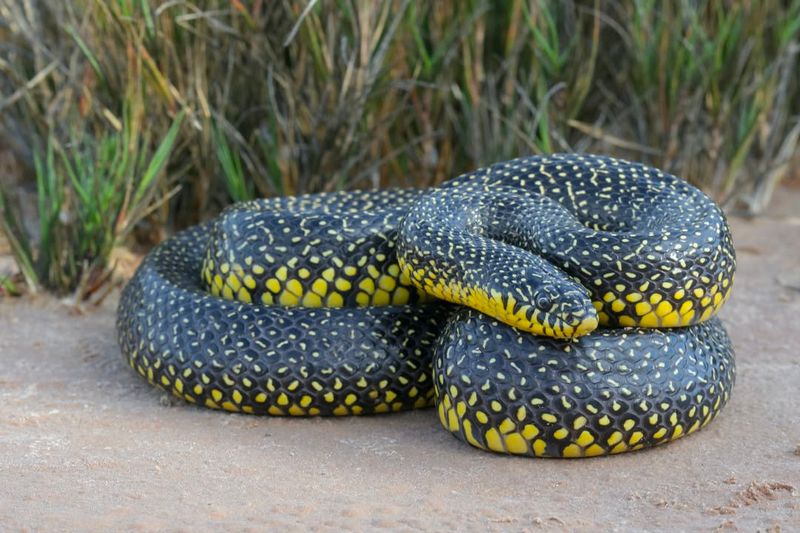
The Speckled Kingsnake, with its striking black body dotted with yellow speckles, is a captivating sight near the Mississippi River. Its unique appearance earns it the nickname ‘Salt and Pepper Snake,’ a testament to its distinctive pattern.
These non-venomous snakes are renowned for their role as natural pest controllers, preying on rodents, birds, and other snakes, including venomous species. Often found in wooded areas, wetlands, and meadows near the river, Speckled Kingsnakes are adept climbers and swimmers.
Their presence in diverse habitats highlights their adaptability and ecological importance. They are solitary creatures, typically active during the day, basking in the sun or hunting in the underbrush.
When threatened, the Speckled Kingsnake may vibrate its tail and emit a musky odor as a defense mechanism.
Their contribution to controlling the populations of rodents and venomous snakes supports the ecological balance of the Mississippi River environment.
5. Mississippi Green Water Snake
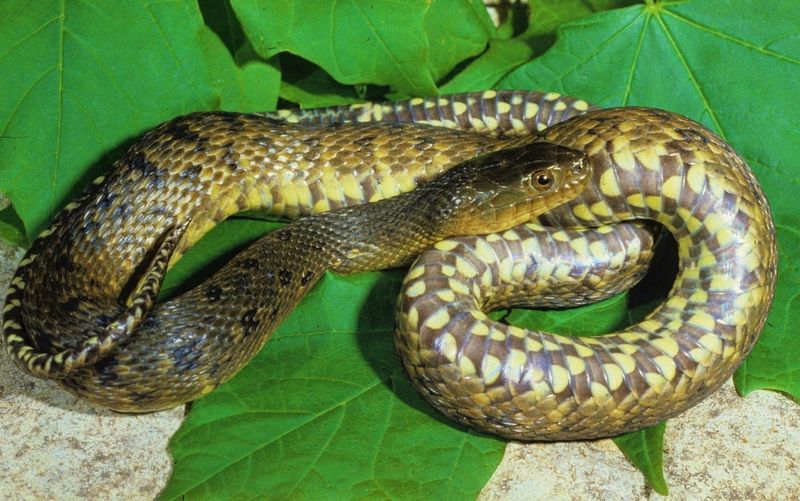
The Mississippi Green Water Snake, a lesser-known inhabitant of the Mississippi River, boasts a sleek, greenish-brown body perfectly suited for aquatic life.
Though often mistaken for the venomous cottonmouth, these non-venomous snakes are harmless to humans. Their distinctive olive or green coloration allows them to blend seamlessly with the river’s vegetation, an effective camouflage against predators.
These snakes thrive in slow-moving waters, often found in the backwaters and bayous of the Mississippi River. As excellent swimmers, they hunt for fish and amphibians, contributing to the river’s food web by keeping these populations in check.
Their presence indicates a healthy aquatic ecosystem, reflecting the river’s biodiversity. Despite their reclusive nature, Mississippi Green Water Snakes can be quite bold when threatened, flattening their bodies and releasing a foul odor to ward off predators.
Their role in maintaining ecological balance highlights the interconnectedness of riverine species and the importance of conservation efforts. By protecting their habitat, we safeguard the intricate web of life that thrives along the mighty Mississippi.
6. Plain-bellied Water Snake
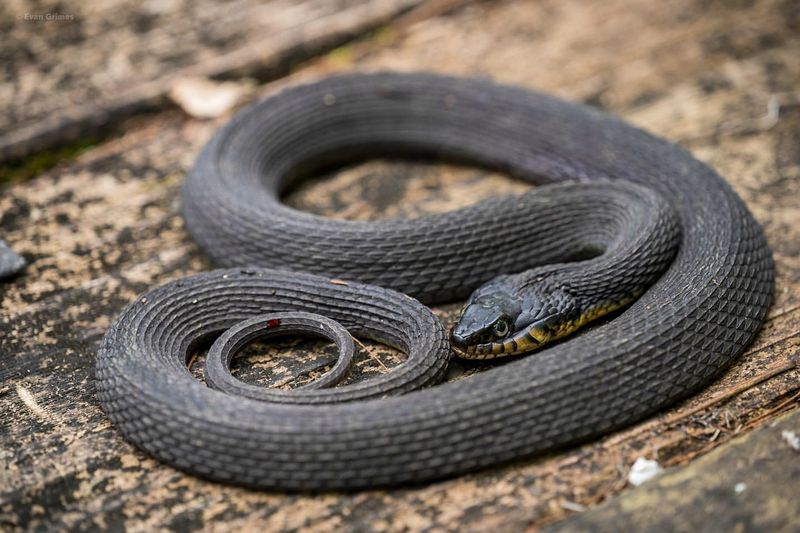
The Plain-bellied Water Snake, with its vibrant red or orange underside, is a distinctive resident of the Mississippi River. These non-venomous snakes are frequently sighted along riverbanks and wetlands, where they hunt for prey.
Their coloration may vary, but the vivid belly sets them apart from other water snakes. These snakes are most active at night, preferring the cover of darkness for hunting. They prey on amphibians, fish, and small mammals, playing a crucial role in controlling these populations.
Despite their aquatic tendencies, Plain-bellied Water Snakes are also adept at climbing, often seen basking on branches overhanging the water. When threatened, they may exhibit aggressive behavior, flattening their bodies and striking defensively. However, their bite is harmless to humans.
7. Rough Green Snake
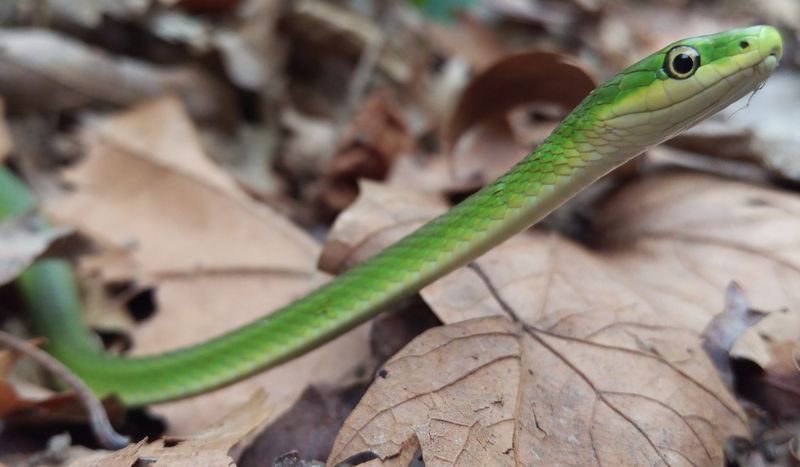
The Rough Green Snake, with its slender, emerald-green body, is a master of disguise among the foliage along the Mississippi River. These non-venomous snakes are excellent climbers, often found weaving through the branches of shrubs and trees.
Their vibrant coloration provides excellent camouflage against the lush greenery of their surroundings. Known for their docile nature, Rough Green Snakes primarily feed on insects and spiders, making them valuable for pest control.
They are diurnal, actively hunting during the day and relying on their keen eyesight to spot prey in the dense foliage. Their presence is a testament to the biodiversity and health of the riverine environment.
In the face of threats, Rough Green Snakes rely more on their camouflage than aggression, often remaining motionless to avoid detection. Their role in the ecosystem underscores the importance of insectivores in maintaining balance.
8. Eastern Hognose Snake
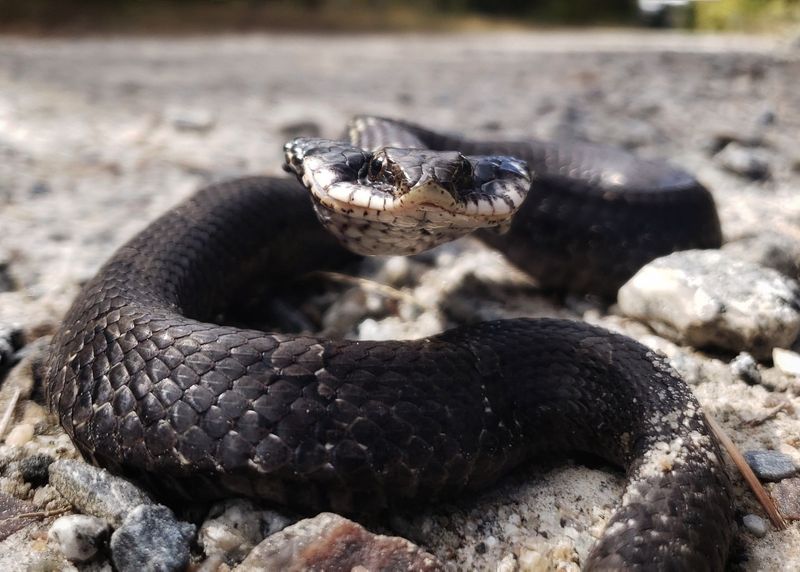
The Eastern Hognose Snake, often called the “puff adder,” is a fascinating inhabitant of the Mississippi River’s forests and grasslands. Known for their distinctive upturned snout, these snakes exhibit unique defensive behaviors that make them stand out among other species.
When threatened, they may flatten their necks and hiss, mimicking venomous species, or even play dead to deter predators. Their diet primarily consists of amphibians, particularly toads, which they hunt using their keen sense of smell.
These non-venomous snakes possess rear fangs that help subdue prey by popping inflated toads. Their presence along the river highlights the diverse array of adaptations that snakes have evolved to survive.
Eastern Hognose Snakes are solitary and secretive, often burrowing into sandy soils to escape predators and harsh weather.
Their ecological role as predators of toads helps maintain the balance of amphibian populations. By appreciating their unique behaviors and contributions, we can better understand the intricate web of life that thrives along the Mississippi River.
9. Timber Rattlesnake
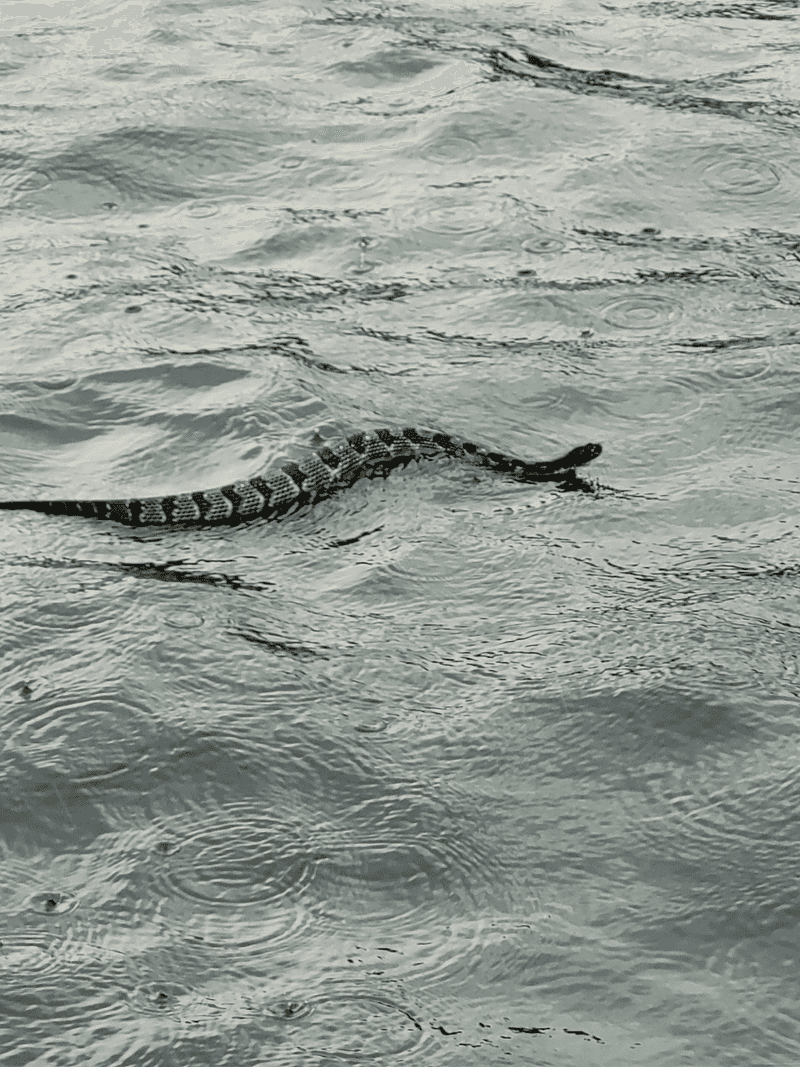
The Timber Rattlesnake, a majestic and often feared resident of the Mississippi River’s forests, is a vital component of the region’s biodiversity. Renowned for their potent venom and distinctive rattling warning, these snakes play a crucial role in controlling the populations of small mammals.
Their coloration varies from yellowish-brown to gray, with dark, chevron-shaped crossbands that provide effective camouflage among the leaf litter. Timber Rattlesnakes are ambush predators, relying on their patience and stealth to capture prey.
They are most active from spring to fall, basking in the sun to regulate their body temperature. Despite their fearsome reputation, Timber Rattlesnakes are generally shy and prefer to avoid human interaction.
10. Copperhead
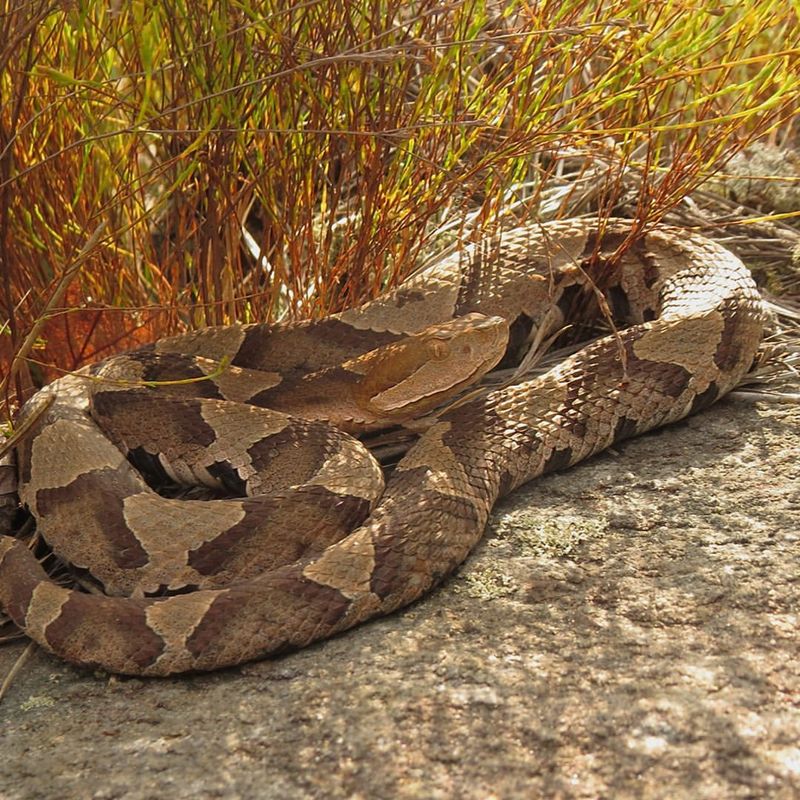
Last but not least, the Copperhead, with its distinctive coppery hue and hourglass pattern, is a venomous snake frequently found near the Mississippi River.
These snakes are masters of camouflage, blending seamlessly with the forest floor’s leaf litter. Their presence is often revealed only by a chance encounter.
Copperheads are ambush predators, relying on their stealth and patience to capture rodents, birds, and amphibians. They are most active during the warmer months, often basking in sun-dappled clearings.
Despite their venomous nature, bites to humans are rarely fatal and usually occur when the snake is accidentally provoked. Their ecological role is significant, as they help control the populations of small mammals and other prey species.

